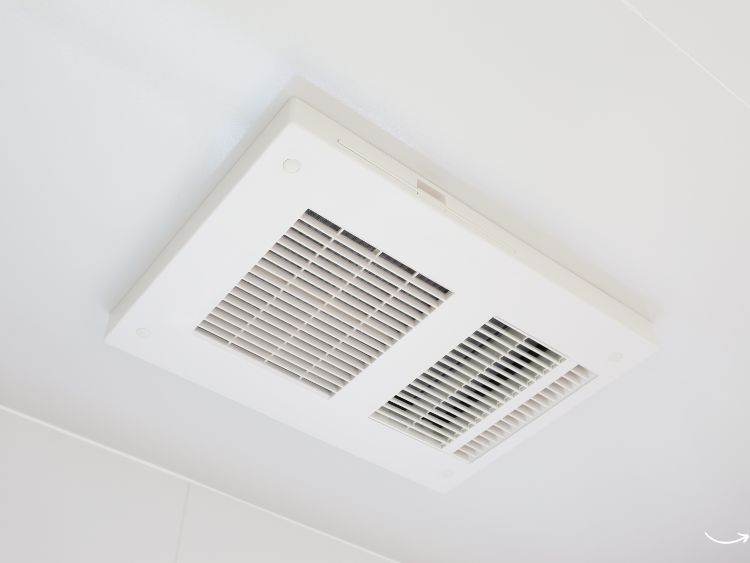Are you tired of your attic feeling like a sauna in the summer and a freezer in the winter? An attic ventilation fan might be the solution you’re looking for. These fans can drastically improve the climate of your home by regulating the temperature in your attic. But how do they work, and why should you consider installing one? Let’s dive into everything you need to know about attic ventilation fans.
What is an Attic Ventilation Fan?
An attic ventilation fan is a device designed to regulate the temperature in your attic by expelling hot air and drawing in cooler air from the outside. These fans can be electric or solar-powered and are typically installed in the roof or gable of the attic.
How Do Attic Ventilation Fans Work?
Attic ventilation fans work by creating a consistent airflow through your attic space. Here’s a quick rundown of the process:
- Intake Vents: Fresh air enters through intake vents located at the eaves or soffits of the roof.
- Exhaust Fans: The fan expels the hot, stagnant air out through exhaust vents or directly outside.
- Air Circulation: This continuous circulation of air helps maintain a balanced temperature, preventing heat buildup and reducing the load on your HVAC system.
Benefits of Attic Ventilation Fans
Why should you invest in an attic ventilation fan? Here are some compelling reasons:
- Energy Efficiency: By cooling your attic, these fans can reduce your home’s overall temperature, making it easier for your air conditioner to maintain a comfortable environment.
- Prolong Roof Life: Excessive heat and moisture can damage your roof’s materials over time. Proper ventilation helps extend the life of your roof.
- Improved Air Quality: Proper ventilation reduces mold and mildew buildup, enhancing the air quality in your home.
Types of Attic Ventilation Fans
There are several types of attic ventilation fans to choose from, each with its own set of features and benefits. Let’s take a closer look.
Electric Attic Fans
Electric attic fans are powered by your home’s electrical system. They are highly efficient and can be controlled via a thermostat or a manual switch.
- Pros: Reliable, consistent power source, can be controlled easily.
- Cons: Increases electricity usage, requires professional installation.
Solar Attic Fans
Solar attic fans are powered by solar panels, making them an eco-friendly option. They harness the power of the sun to keep your attic cool.
- Pros: Energy-efficient, environmentally friendly, reduces electricity costs.
- Cons: Less effective on cloudy days, higher initial cost.
Wind-Powered Attic Fans
Wind-powered attic fans, also known as turbine vents, use the wind to power the ventilation process. They are simple and cost-effective.
- Pros: No energy cost, easy to install.
- Cons: Depend on wind availability, less powerful than electric or solar options.
Installation Process
Installing an attic ventilation fan can be a DIY project for those handy with tools, but it’s often best left to professionals to ensure optimal performance and safety.
Step-by-Step Installation Guide
- Choose the Location: Select a spot near the peak of your roof for maximum efficiency.
- Cut the Opening: Carefully cut an opening in the roof or gable, ensuring it matches the size of the fan.
- Install the Fan: Secure the fan in place, following the manufacturer’s instructions.
- Connect Power: For electric fans, connect the wiring to your home’s electrical system. For solar fans, position the solar panel for maximum sun exposure.
- Seal and Test: Seal around the fan to prevent leaks and test the fan to ensure it’s working properly.
Maintenance Tips
Regular maintenance is crucial to keep your attic ventilation fan running efficiently. Here are some tips to help you out:
- Clean the Fan Blades: Dust and debris can accumulate on the blades, reducing efficiency. Clean them regularly.
- Check the Vents: Ensure intake and exhaust vents are clear of obstructions.
- Inspect Wiring: For electric fans, inspect the wiring periodically to prevent electrical issues.
FAQs
How much does it cost to install an attic ventilation fan?
The cost can vary widely depending on the type of fan and the complexity of the installation. On average, you can expect to spend between $300 and $700.
Can I install an attic ventilation fan myself?
Yes, if you have some experience with home improvement projects and the necessary tools. However, for electric fans, it’s recommended to hire a professional to handle the wiring.
How long do attic ventilation fans last?
With proper maintenance, an attic ventilation fan can last between 10 to 15 years.
Will an attic ventilation fan reduce my energy bills?
Yes, by helping to cool your home more efficiently, an attic ventilation fan can reduce the load on your HVAC system, potentially lowering your energy bills.
Summary
Attic ventilation fans are an excellent investment for maintaining a comfortable and energy-efficient home. They help regulate your attic’s temperature, improve air quality, and extend the life of your roof. Whether you choose an electric, solar, or wind-powered fan, the benefits are undeniable. With proper installation and maintenance, an attic ventilation fan can be a valuable addition to your home.
In conclusion, if you’re looking for a way to enhance your home’s comfort and efficiency, consider installing an attic ventilation fan. It’s a small change that can make a big difference. So, why not give it a try and see the benefits for yourself?





